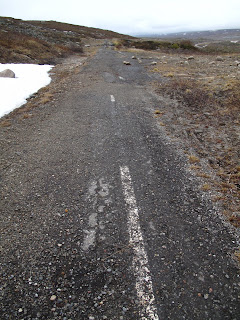Last week I went to visit a glacier, or at least a small leg of one. Svartisen is the second largest ice mass in Norway, one of the largest in Europe and while I (rightfully) expected to be impressed by the glacier itself, I could never have imagined the incredible workings of it seen on the way. I am convinced that this hike was the best experiential lesson one could have in geology.
 It is difficult to travel through Norway and not recognize that the country has been shaped by glaciers. The steep cliffs and uneven coastline quickly signal that this place did not geologically form quite in the same way or at the same time as the larger part of Europe or North America. However, it was not until arriving by boat into area cleared by a glacier within the last 100 years that I truly understood how this intense natural process works. The glacier scrapes away earth and bedrock, leaving a series of vast, uneven masses.
It is difficult to travel through Norway and not recognize that the country has been shaped by glaciers. The steep cliffs and uneven coastline quickly signal that this place did not geologically form quite in the same way or at the same time as the larger part of Europe or North America. However, it was not until arriving by boat into area cleared by a glacier within the last 100 years that I truly understood how this intense natural process works. The glacier scrapes away earth and bedrock, leaving a series of vast, uneven masses.
 Scale - there is a 6'-2" Norwegian in the photo above.
Scale - there is a 6'-2" Norwegian in the photo above.
Given time after the glacier passes, water runs over the newly exposed rock surfaces, smoothing and eroding areas forming puddles, streams, and pools. Sediment turns into soil and slowly birds and insects return and the wind carries seeds which develops vegetation.

Given enough time, soil and vegetation cumulate and become the more typical landscape that Norway is noted for.

Oh, and before I forget.. Here is that little glacier arm that has caused (and continues) all of this-














